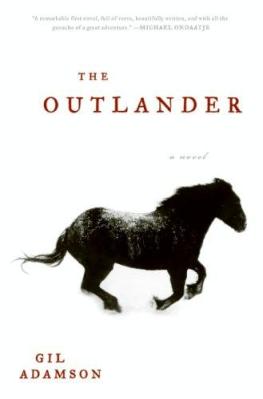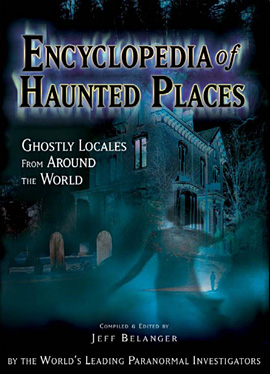 At the close of his book of essays How Fiction Works, literary critic James Wood writes: “The writer has to act as if the available novelistic methods are continually about to turn into mere convention and so has to outwit that inevitable ageing. The true writer is one who must always be acting as if life were a category beyond anything the novel had yet grasped.”
At the close of his book of essays How Fiction Works, literary critic James Wood writes: “The writer has to act as if the available novelistic methods are continually about to turn into mere convention and so has to outwit that inevitable ageing. The true writer is one who must always be acting as if life were a category beyond anything the novel had yet grasped.”
This is as good a notion as any when thinking about Roberto Bolaño’s monstrous novel 2666. It’s an intimidating book, not just because of the size (898 pages), or because of Bolaño’s much-hyped reputation as a towering genius of South American literature, or even because this “novel” is really five novels crammed together. It’s got something to do with Bolaño’s determination to break every rule of conventional literature. Expect the plot to be resolved? Characters to develop? A moral? It’s not going to happen while Bolaño’s around. And in this way he seems to be doing exactly what what Wood suggests – writing a new kind of novel that expresses his idea of the messiness and inconclusiveness of life.
Bolaño’s life was picturesque even by the standards of South American novelists. He was born in Chile, the son of a boxer, but grew up in Mexico City, where he became a journalist. He returned to Chile in 1973 to support the socialist government of Allende, and was thrown into prison after it was overthrown by Pinochet’s fascists. Expecting to be murdered, he was released when two of his prison guards turned out to be old schoolfellows. On release he became a Trotskyist, bohemian poet and professional provocateur, highly contemptuous of the established old guard of South American writers. In the 70s he moved to Europe, lived a vagabond life, wrote poetry and acquired a heroin habit. By 1991 he had a family and embarked on the unlikely project of supporting them by writing novels, of which he wrote seven in a dozen years, along with many short stories and essays. (Apparently two more novels were found among his papers after his death). He was rapidly hailed as the most important Latin American writer of his generation, and died at the age of 50, awaiting a liver transplant.
2666 was his final novel, published posthumously, and I confess to not having read his others. According to the introduction, Bolaño wanted the five sections of 2666 to be published individually (because that would mean better sales, and a better income for his family after his death), but his executors decided to publish them as one, in accordance with Bolaño’s original artistic intention. So what we have are five novels which connect with each other at occasional points, share themes and motifs, but are not closely related in the manner of a sequence like, say, Lawrence Durrell’s Alexandria Quartet.
A mere summary doesn’t begin to do justice to 2666, because the experience of reading it involves multiple digressions, stories within stories, and minor characters who hijack the narrative then disappear. But here goes. The first section,’ The Part about Archimboldi’, concerns four literary critics who are obsessed with an elusive German writer. The critics meet at conferences, fall in and out of love with each other, and set off to Mexico in search of the never-sighted Archimboldi, but fail to find him. Section Two concerns a Mexican academic, Amalfitano, who is fascinated by the obscure author of a book about geometry, and attempts to repeat experiments conducted by the avant garde artist Marcel Duchamp. The third part, ‘The Part About Fate’, concerns a journalist – named Fate, of course - who goes to Mexico to cover a boxing match and gets drawn into various events which he does not comprehend.
The massive fourth part, ‘The Part About The Crimes’, is set in the nightmarish fictional town of Santa Teresa, clearly based on Ciudad Juarez. The town is in the grip of drug lords, corrupt politicians, businessmen and cops. Young women are raped and murdered at a rate of several every month – mostly working class young women employed at the maquiladoras (factories operated by multinationals). In this section, Bolaño seems to have invented a new genre of crime writing: rather than a few murders and a dedicated investigator who tracks down the killers, we have dozens, perhaps hundreds of murders (I lost count), multiple killers, and investigators who occasionally manifest interest but often seem indifferent or even complicit in the crimes. What is chilling about Bolano’s account is not just the matter-of-fact way the crimes are described, but the lack of reaction to them. “The dead woman must have been about twenty-five and she had a congenital dislocation of the right hip. And yet, no one missed her …” There is little official response to the crimes, and the only person passionate about bringing them to public attention is an elderly, female television psychic. There are many hints of official cover-ups - forensic evidence is always disappearing - and it is suggested (as has been claimed in the case of the Ciudad Juarez femicides) that powerful men are having women murdered at orgies. Almost as many women, though, are killed in banal working-class domestics – and Bolano describes these too. It could be argued that the whole town, or the whole of Mexico, is the murderer.
The final section returns to the figure of Archimboldi, and recounts the life of the mysterious German writer, from his bizarre experiences as a soldier in World War Two to his years of literary success. It’s a black joke on the part of Bolaño that the four critics in the first part were unable to find out the tiniest detail about Archimboldi; in part five, we have 270 pages about every aspect of his life. We who have never read Archimboldi learn more about him than we ever wanted to know, while those who devoted their lives to him know nothing.
It’s not surprising that, confronted by a book like this, critics resort to adjectives like “visionary”, “terrifying”, “awe-inspiring”, “wondrous” ,”challenging”, “intellectual”, “intermittently insane” et cetera. That’s all fair enough, but what is harder to explain is just what Bolaño is doing. For one thing, he is undermining the conventions of the traditional novel. Take the idea, common in crime fiction, that investigators investigate. In the fourth part of 2666, after about 300 pages of murders, a character called Albert Kessler appears, said to be the world’s foremost expert on serial killers. Aha, the reader thinks, now a real investigator is on the job, not like those corrupt Santa Teresa cops. Kessler wanders around for a bit, gives a lecture, then disappears from the narrative. Well, Bolaño seems to be saying, what did you expect? This isn’t Hollywood. Another convention that he flouts is the notion of the protagonist whose journey the reader follows. In Bolano’s world, you are likely to find yourself taken on a thirty-page detour by a minor character who never reappears. There’s something radically democratic about this. In Santa Teresa, a woman can be murdered and no one knows or cares who she is, but for Bolano, everyone’s story is important.
More philosophically, his project seems to be about knowledge. His books are full of characters who are seeking knowledge – whether it’s the facts about the life of a missing writer, why an experiment was conducted 80 years ago, or what is behind a hideous crime. Bolaño chucks in teasing lines like “No one pays attention to these killings, but the secret of the world is hidden in them.” The secret of the world? Where was that? I must have missed it. We, the readers, join the ranks of those hunting, hopelessly, for answers which are not forthcoming. In the end we are no better than Archimboldi’s critics, charging off on a wild goose chase to Mexico. We’ve read 900 pages and we know little more than we did at the start. There is no answer, no philosophy, no system that explains it. There’s just Bolaño, floating over the whole thing, laughing at us.

Roberto Bolano
Here’s a fantastic essay by Benjamin Kunkel from the London Review of Books on Bolano and his work.

 -ISH?
-ISH? 




 this is the unabridged version of an article published and written originally for Bnet.co.uk of which I am a regular contributor
this is the unabridged version of an article published and written originally for Bnet.co.uk of which I am a regular contributor

















 Sujata Sankranti
Sujata Sankranti There’s a Mouse About the House
There’s a Mouse About the House





 Natasha at Maw Books recently reviewed All the Broken Pieces by Ann Burg for the Vietnam War Reading Challenge. Here’s an excerpt from her review:
Natasha at Maw Books recently reviewed All the Broken Pieces by Ann Burg for the Vietnam War Reading Challenge. Here’s an excerpt from her review:
 Melinda has been ostrasized by her peers because she called the cops at a summer party, but no one knows the horrible secret she is hiding. “It” has devastated her life and she feels there is no one to talk to so she keeps silent about it until “It” rears its ugly head again and she needs to save her former best friend from undergoing the same fate Melinda did.
Melinda has been ostrasized by her peers because she called the cops at a summer party, but no one knows the horrible secret she is hiding. “It” has devastated her life and she feels there is no one to talk to so she keeps silent about it until “It” rears its ugly head again and she needs to save her former best friend from undergoing the same fate Melinda did. Fiona’s senior year of high school is off to an interesting start. After a brief (but thrilling) encounter with her massive crush Gabe, the senior class is shuffled together and given a year-long assignment: to participate in a marriage education program in which one girl will be partnered with one boy in their “relationship.” These marriages include the works: establishing an income, choosing a “home,” organizing budgets.
Fiona’s senior year of high school is off to an interesting start. After a brief (but thrilling) encounter with her massive crush Gabe, the senior class is shuffled together and given a year-long assignment: to participate in a marriage education program in which one girl will be partnered with one boy in their “relationship.” These marriages include the works: establishing an income, choosing a “home,” organizing budgets. Angels Watching Over Me…Maybe this title brought back memories of singing this old spritual…
Angels Watching Over Me…Maybe this title brought back memories of singing this old spritual…


